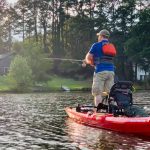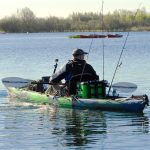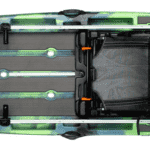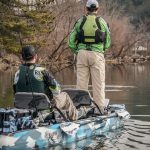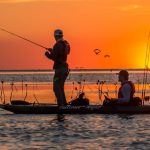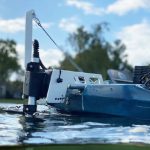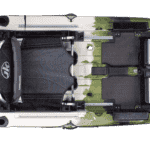When Bonafide set out to design the ultimate fishing kayak, they put in years of research that would ultimately pay off in a big way. When they produced the final product, what they had was a kayak that was laser-focused to have one defining characteristic—Fishability.
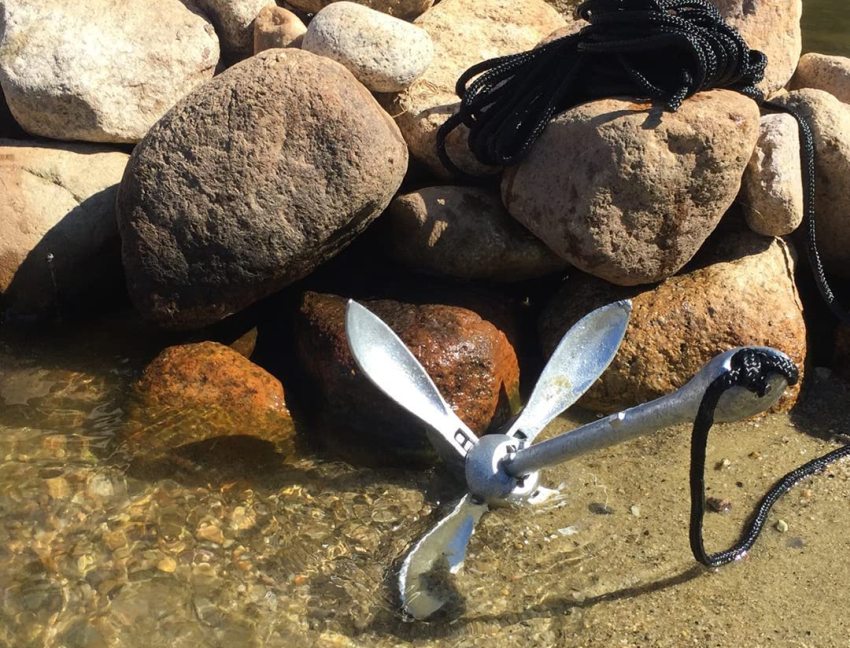
After hours of testing and holding our own against currents and winds, we chose the Gradient Fitness 3.5 lb Grapnel Anchor as the best kayak anchor.
This is our roundup of the best kayak anchors on the market today. We evaluated and analyzed different models based on their functionality, rust resistance, and ease of use to make your choice easier. Over the years, we’ve tested a number of kayak anchor models so you don’t have to.
We’ll look at all the various anchor types, what to consider when shopping for an anchor, how to rig an anchor to your kayak, and more. I’ll also share a list of the best kayak anchors around so you can find the perfect option for your fishing trips.
An anchor is a small (and mostly inexpensive) addition to your kayak, but if you’re an angler looking to make the most of an epic fishing spot, it’s one you’ll definitely want!
As an affiliate of Amazon and other retailers, we may earn a small commission when you buy via our links, at no additional cost to you. Thank you!
Quick Answer: The Best Kayak Anchors for You
Don’t have time to read the whole article? No worries! Take a look at our condensed list to find the best choice for your specific needs:
- Best Overall: Gradient Fitness 3.5 lb Grapnel Anchor
- Most Durable: Extreme Max Complete Grapnel Anchor Kit
- Most User-Friendly: BEST Premium 3.5lb Folding Kayak Anchor
- Best Bruce Anchor: Cooper Anchor 1Kg/2.2lb Nylon Plow Anchor
- Best Mushroom Anchor: YakGear 5lb Mushroom Anchor
- Best Sandbag: CALPALMY 2-in-1 Sand Anchor
- Best Stakeout Pole: YakAttack ParkNPole Stakeout Pole
- Best Drift Sock: Mythik Lures Drift Master Drift Sock
- Best Budget: Seachoice Folding Grapnel Anchor
Comparison Table: Best Kayak Anchors
| Model | Specs | Where To Buy |
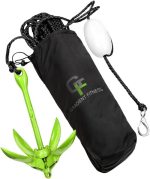 Gradient Fitness 3.5 lb Grapnel Anchor | Weight: 3.5 lbs. Material: Galvanized, powder-coated steel Anchor Line: 25′ | Amazon |
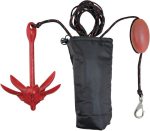 Extreme Max Complete Grapnel Anchor Kit | Weight: 3.3 lbs. Material: Galvanized, powder-coated steel Anchor Line: 25′ | Amazon |
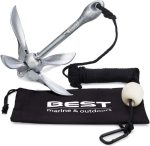 BEST Premium 3.5lb Folding Kayak Anchor | Weight: 3.5 lbs. Material: Galvanized iron Anchor Line: 40′ | Amazon |
 Cooper Anchor 1Kg/2.2lb Nylon Plow Anchor | Weight: 2.2 lbs. Material: Nylon Anchor Line: Not included | Amazon |
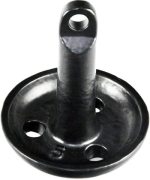 YakGear 5lb Mushroom Anchor | Weight: 5 lbs. Material: Vinyl-coated cast iron Anchor Line: Not included | Amazon |
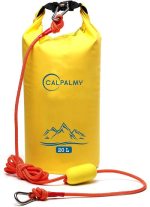 CALPALMY 2-in-1 Sand Anchor | Weight: Up to 50 lbs. Material: Heavy-duty PVC Anchor Line: 12′ | Amazon |
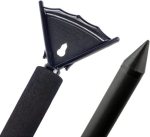 YakAttack ParkNPole Stakeout Pole | Weight: 1.65 lbs. Material: Fiberglass Anchor Line: Not included | Amazon |
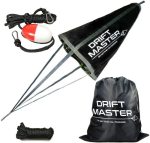 Mythik Lures Drift Master Drift Sock | Weight: Unspecified Material: Ripstop PVC with nylon straps Anchor Line: 16′ | Amazon |
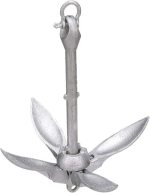 Seachoice Folding Grapnel Anchor | Weight: 3.5 lbs. Material: Galvanized iron Anchor Line: Not included | Amazon |
Top-Rated Kayak Anchors
Best Overall: Gradient Fitness 3.5 lb Grapnel Anchor
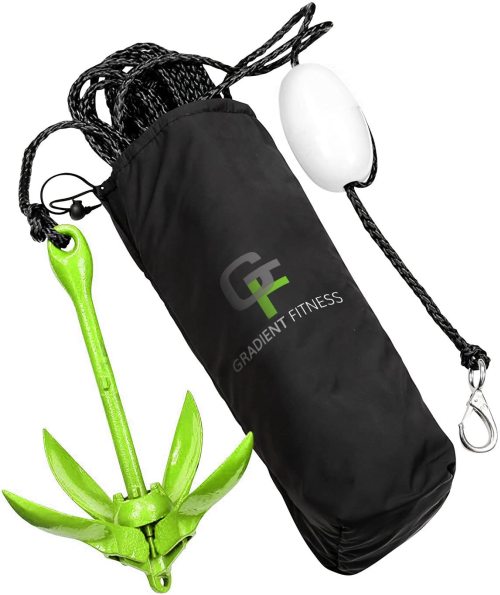
Weight: 3.5 lbs. (1.58 kg)
Material: Stainless steel
Anchor Line: 25′ (7.62 m)
This four-flute folding grapnel anchor is ultra-durable, heavy enough to secure your kayak even against high winds and choppy waters, and built for both professional and casual fishermen. When folded up, it’s just 3” wide and 12” long and slides easily into the provided storage bag. But when deployed, the curving hooks will dig into the river/lake bed and secure you firmly in place.
The stainless steel anchor is finished with a marine-grade rust-resistant coating. Also included are a 25-foot length of highly visible green-and-black rope and an anchor buoy.
Pros:
- Great for muddy, weedy, sandy, and rocky conditions
- Includes storage bag and straps to secure it to kayak or SUP
- Highly visible green anchor
- Durable, rust-resistant, and long-lasting
Cons:
- Anchor line is very short
- Not recommended for saltwater use
Most Durable: Extreme Max Complete Grapnel Anchor Kit
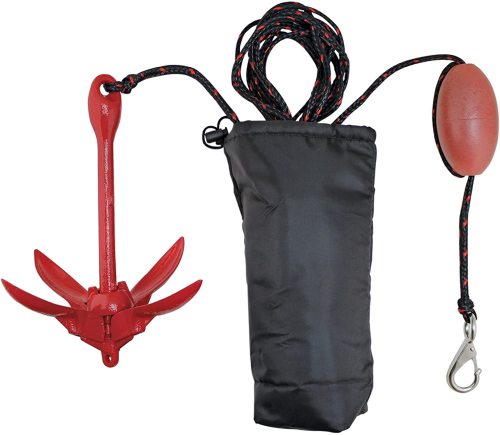
Weight: 3.3 lbs. (1.36 kg)
Material: Galvanized, powder-coated steel
Anchor Line: 25′ (7.62 m)
Drop this bright red grapnel anchor into any water, and it will be highly visible to fellow boaters and swimmers. The powder-coated galvanized steel attracts the eye, but it’s also highly resistant to rust and corrosion.
The four-fluke grapnel anchor is easy to deploy and retrieve (thanks to the attached marine-grade foam anchor buoy), and though it’s not the heaviest of the grapnel anchors on our list, it weighs enough to secure you against currents and high winds.
Sadly, the anchor line is a bit short (just 25-feet) and prone to fraying and damage. You’ll want to replace the rope immediately for something longer and sturdier. But the anchor itself is designed to last you for years to come—well deserving of its title as the “most durable” kayak anchor on our list!
Pros:
- Sturdy, easily-deployed grapnel anchor
- Top-notch hold performance even on rocky riverbeds
- Brightly colored and easily visible
- Very affordable
Cons:
- Accompanying anchor line is too short and prone to wear
- Best-suited to shallow waters and minimal currents
Most User-Friendly: BEST Premium 3.5lb Folding Kayak Anchor
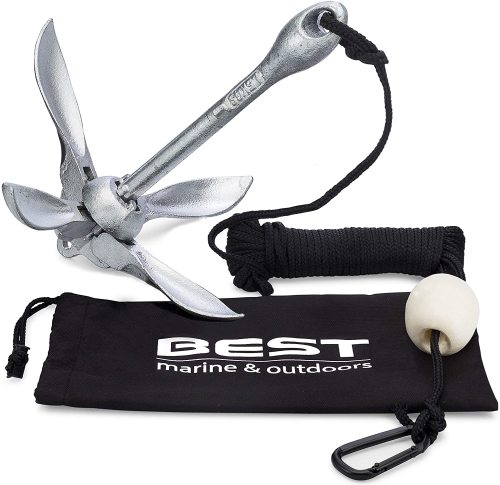
Weight: 3.5 lbs. (1.58 kg)
Material: Galvanized iron
Anchor Line: 40′ (12.2 m)
Looking for an easy-to-deploy grapple anchor built specifically for user convenience? Look no further! This folding kayak anchor is compact enough to carry on any kayak, but when the flukes are open, it’ll dig into the river/lake bed and keep you securely in place. Thanks to the built-in anchor collar, you can lock the flukes in place (in either extended or folded position) in an instant.
The anchor is made using galvanized iron rather than steel, but it’s rust-resistant and highly durable. It also weighs 3.5 pounds—more than enough to keep your kayak anchored in high winds and fast currents.
Included in the kit is a 40-foot length of rope and a buoy ball, as well as a stainless steel carabiner that’ll let you easily clip the anchor to your kayak even without a mount. Best of all, it comes with a 100% money-back guarantee if you’re not fully satisfied.
Pros:
- 40-foot, highly durable rope included
- Good weight for all kayak sizes
- Quick-release/secure anchor collar
- Highly versatile
Cons:
- Rope isn’t marine-rated
- Bag may not be thick enough to prevent the flukes from damaging an inflatable kayak hull
Best Bruce Anchor: Cooper Anchor 1Kg/2.2lb Nylon Plow Anchor
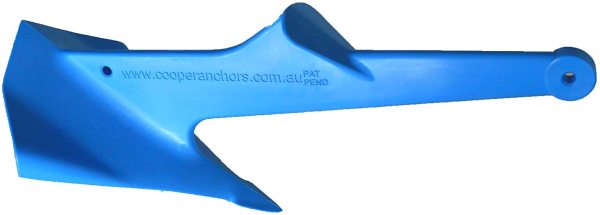
Weight: 2.2 lbs. (1 kg)
Material: Nylon
Anchor Line: Not included
If you want lightweight and compact, this is the anchor for you! The Bruce Anchor design makes it easy to anchor your boat in place with minimal fuss—no worry about folding or unfolding flukes, filling sandbags, or carrying excess weight on your kayak.
It’s definitely a lighter-weight anchor at 2.2 pounds, best-suited to milder conditions and slow currents. The fact that it’s made from nylon rather than steel or aluminum means that it’s resistant to rust, but possibly more prone to damage from rocks and gravel.
Though it’s on the pricier side compared to the other products on this list, it’s definitely a good option for those who are sick and tired of fussing with foldable grapnel-style anchors.
Pros:
- Easily deployed and stowed
- Lighter-weight
- Solidly anchor your kayak to rocky or gravelly riverbed
- Sets in seconds; no need to recheck your hold
Cons:
- No anchor line included
- Pricey
- Nylon is more susceptible to cracks and scratches than steel
Best Mushroom Anchor: YakGear 5lb Mushroom Anchor
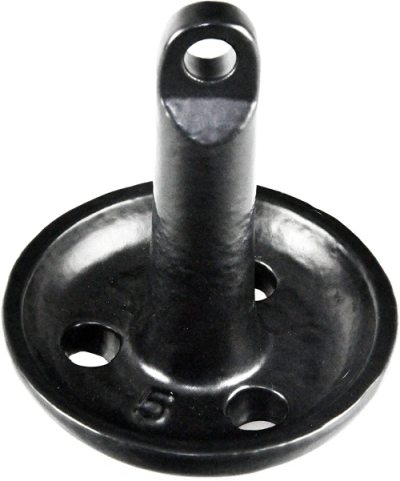
Weight: 5 pounds
Material: Vinyl-coated cast iron
Anchor Line: Not included
If you just want a weight that’ll keep you from drifting but don’t want to bother trying to free a dug-in plow or grapnel anchor, this mushroom anchor may be just what you need. It’s light enough that you can carry it without overloading your kayak, but offers just enough heft to keep you from drifting away.
The anchor is made with cast iron and coated with a thick, waterproof vinyl that makes it both extra-durable and highly waterproof. It’s even compatible with seawater!
Though it doesn’t include an anchor line, you’ll find the extra-large hole on the top of the anchor makes it brilliantly easy to secure your rope in place. And thanks to its mushroom shape, once it sinks into the sea or riverbed, it’ll stay put until you haul it up.
Pros:
- Designed to displace sand and silt to sink into the sea/riverbed
- Good weight without being excessively heavy
- Can be used in saltwater
- Durable and corrosion-resistant
Cons:
- Doesn’t include anchor line
- Vinyl coating can get scratched by sharp rocks
Best Sandbag: CALPALMY 2-in-1 Sand Anchor
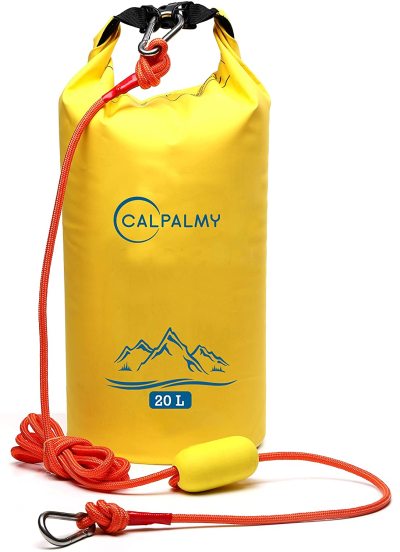
Weight: Up to 50 lbs. (22.67 kg)
Material: Heavy-duty PVC
Anchor Line: 12′ (3.65 m)
If you’re fishing someplace with a sandy or silty bed, you’ll want to consider bringing this handy sandbag anchor along. Rocks and gravel might damage the bag, though the heavy-duty PVC is pretty damage-resistant. However, on a soft river or seabed, it’s the perfect solution to keep yourself securely anchored.
The beauty of this anchor is that you can fill it up with as much sand as you want—anywhere from a few ounces up to 50 pounds. That makes it a customizable weight that you can adapt according to your use. Row it upriver empty, fill it on the shore, and paddle it out a few meters to drop it in your fishing spot. When the time comes to head home, empty it out and transport it empty once more.
ALSO SEE: Best Dry Bags for Kayaking
The sandbag comes with a 12-foot rope and rustproof, stainless steel clips to attach it securely to your kayak. Thanks to its bright colors—yellow bag and red rope—it’s highly visible in even murky water.
Pros:
- Ultra-lightweight and extra-heavy—it all depends how much you fill it
- Easy to empty and refill
- Made from durable heavy-duty PVC
- Doubles as a watertight dry bag
Cons:
- Anchor line is very short
- May be damaged if dragged over sharp rocks or gravel
Best Stakeout Pole: YakAttack ParkNPole Stakeout Pole
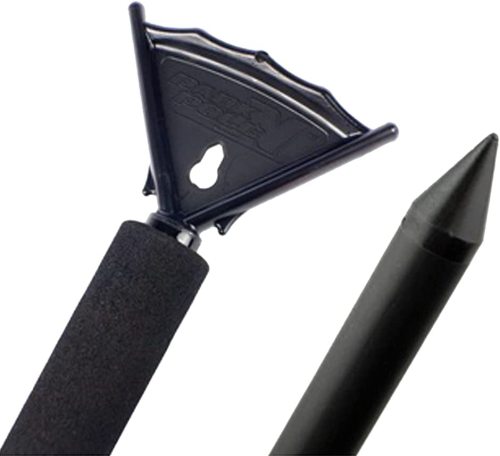
Weight: 1.65 lbs. (0.75 kg)
Material: Fiberglass
Anchor Line: Not included
If you’re fishing in shallow water or near the shore, this will be the perfect stakeout pole for you! Not only is it made with super-tough and ultra-lightweight fiberglass that is highly resistant to damage or breakage, but it’s surprisingly versatile. You can buy an extension that makes it up to 12 feet long.
The pole comes in 6-foot and 8-foot lengths, with a sharp tip that drives easily into even hard-packed riverbeds. The handle is sturdy and gives you good grip to drive it into the ground, and the one-piece construction is nicely flexible so it will bend and flex with the river’s current without ever breaking.
There’s even a conveniently placed eyelet that makes it easy to thread a rope or paracord through to secure your kayak to the pole.
Pros:
- Sturdy one-piece fiberglass construction
- Incredibly easy to use
- Can be extended up to 12-feet long
- Lightweight and beautifully portable
Cons:
- No anchor line included
- Sharp tip may puncture inflatable kayaks
Best Drift Sock: Mythik Lures Drift Master Drift Sock
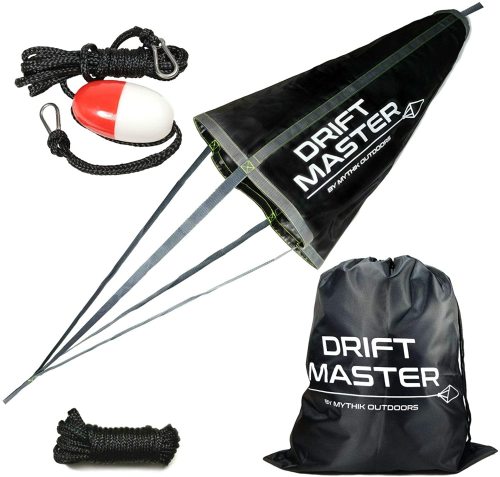
Weight: Unspecified
Material: Ripstop PVC with nylon straps
Anchor Line: 16′ (4.87 m)
This ultra-tough drift sock will serve you well for years to come, thanks to the highly durable proprietary ripstop PVC used to build it. All of the seams have been reinforced to maximize toughness, and the nylon straps will endure even the strongest current without tearing or fraying.
The drift sock is UV-resistant, as is the 16-foot marine-grade anchor line that comes with it. Also included is a brightly colored anchor buoy and a bag that makes it easy to store the rolled-up line and anchor in your kayak’s bulkheads.
Best of all, it’s well-priced and designed specifically by anglers to deliver the best results with every deployment.
Pros:
- Highly durable and reliable
- UV-resistant materials
- Affordable
- Easy to store and deploy
Cons:
- Won’t fully stop you, just slow your drift
- Occasional user complaints of missing straps or quality control issues
Best Budget Pick: Seachoice Folding Grapnel Anchor
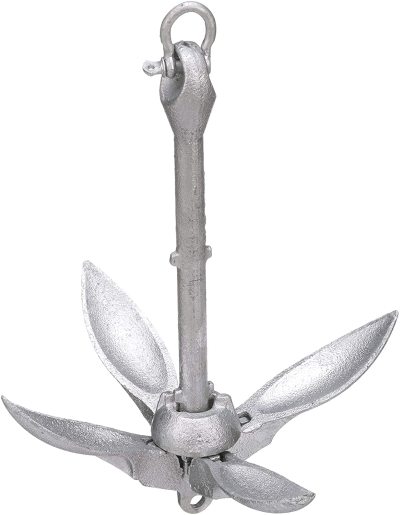
Weight: 3.5 lbs. (1.58 kg)
Material: Galvanized iron
Anchor Line: Not included
If you’re looking to drop anchor without breaking the bank, give this grapnel anchor a try! It costs as much as 50% less than the other products on our list, and though it doesn’t include an anchor line, it’s tough as nails and built to last. The malleable iron has been heavily galvanized to make it rust- and corrosion-resistant, even in saltwater.
The anchor is easy to lock into both open and closed positions thanks to the anchor collar, and you’ll find it folds down nicely compact for easy storage when not in use. Though this particular model weighs 3.5 pounds, Seachoice offers a range of anchors between 1.5 and 9 pounds—great if you want variety at a great price.
Pros:
- Dependable and sturdy
- Easy to fold and open
- Best-priced anchor on our list
- Perfect for kayaks, SUPs, and small boats
Cons:
- No anchor line included
- Doesn’t include eye-bolt for secure line attachment
The Ultimate Buying Guide to Kayak Anchors
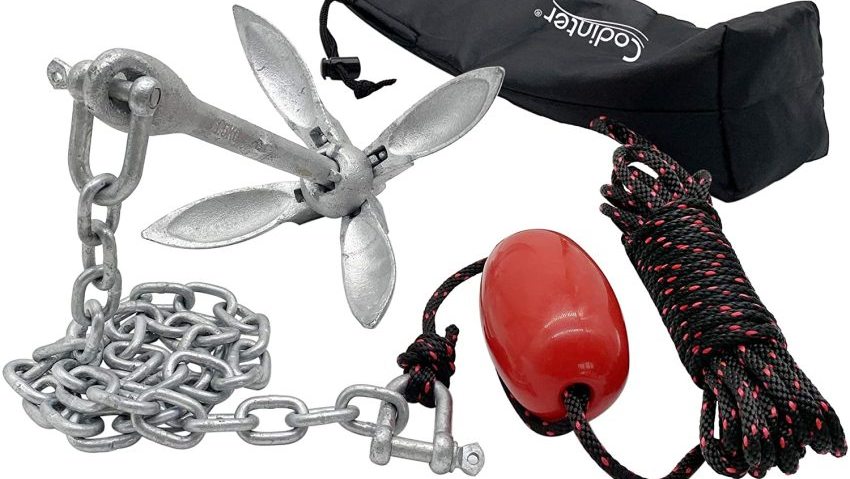
If you’ve never heard of kayak anchors before, you’re not alone. A lot of people have no idea kayaks are even compatible with anchors, or that anchors can be designed specifically for use with a kayak.
Let’s take a look at everything you need to know about kayak anchors, starting with the most important information of all: what types of anchors will serve your needs best.
Types of Kayak Anchors
There are a surprising variety of kayak anchors manufactured and distributed today:
Mushroom

Mushroom anchors are basically inverted mushroom-shaped “dead weights” that you drop into the water, that settle onto the bottom of the river or lake and hold you in place. They’re typically heavier (minimum of 10 lbs.) because they’re relying entirely on their weight to keep you from drifting. You’ll usually see them utilized by motorized boat, but because of their weight, they’re less popular among kayakers.
Sand Bag
This is exactly what it sounds like: a bag filled with sand that sits at the bottom of the river/lake bed to hold your kayak in place. These bags are typically designed to be filled as desired so you can adjust just how much weight you’re carrying/using for anchor.
Plow
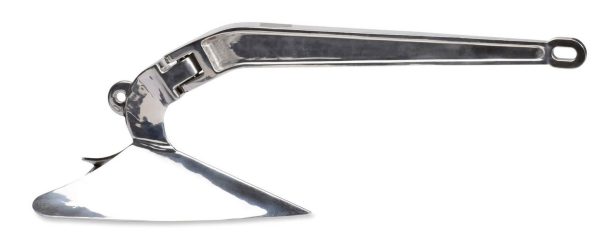
Plow anchors are designed and function like the plows once used by farmers to till soil. Basically, they include a long, straight shaft attached to a “blade” that digs into the river or lake bed, anchoring you in place. They can be hard to set—you may drift a bit until the anchor blade finally bites—but once in place, they’ll keep you securely anchored.
Drift Sock
Drift socks, also known as “drift chutes”, are basically parachutes that operate in the water instead of the air. When deployed, the chute will extend out behind you and fill up with water, slowing your forward motion. These are typically used by small motorized watercraft, but they can work to keep your kayak from drifting too far off course. They can also maintain correct heading and keep your kayak pointed in the right direction for the best fishing. However, they won’t fully STOP you—which is why they’re usually paired with another anchor type.
Drag Chain
A drag chain is exactly what it sounds like: a chain (or multiple chains) that drag along the bottom of the river or lake, using both the chain’s weight and the contact with the river/lake bed to slow you down. They’re best suited to shallow rivers, as chains are heavy and take up a lot of space in your kayak, so you want to limit the length (or “scope”, as you’ll see explained below) of the chain you need to carry.
RELATED: 11 Best River Fishing Kayaks of 2023: Reviews and Buying Guide
Stakeout Pole
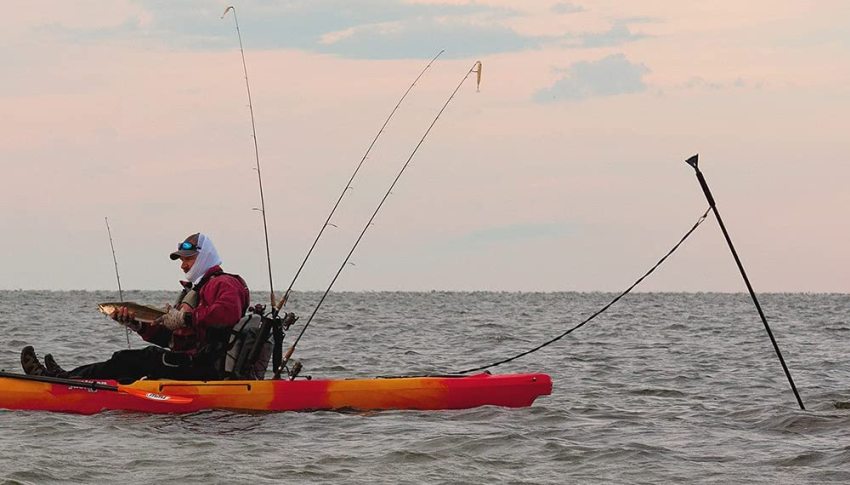
Stakeout poles are shallow water anchors. They are designed to bury like a stake into the lake or river bed, or on the banks of the river or lake if you’re fishing near shore. Some are weighted enough that they’ll bury themselves when you drop them into the water, while others have to be manually staked into the ground. Once embedded in the earth, they’ll hold your kayak securely anchored.
Bruce Anchor
Bruce anchors look like oversized fishing hooks and work similar to plow anchors. Once the anchor hits the river/lake bed, it drags along behind you until the hook either buries itself deep enough in the ground or snags on some obstacle to stop your movement.
Grapnel Anchor
Grapnel anchors are considered the most effective forms of anchors, thanks to their four folding arms that dig into the river/lake bed and secure your kayak in place. They’re popular among kayakers because they’re affordable, easy to deploy, and take up very little space in your kayak when folded up.
Grapnel anchors are often heavy enough to serve as a drag anchor without needing to deploy the arms, but in high winds and strong currents, the foldable arms secure you firmly in place. However, they can be tricky to set up and are more prone to getting stuck in place, forcing you to wrestle to free the anchor. (Unless you use this really neat trick shown in this video by our friends over at Fishing Online.)
Factors to Consider When Buying a Kayak Anchor
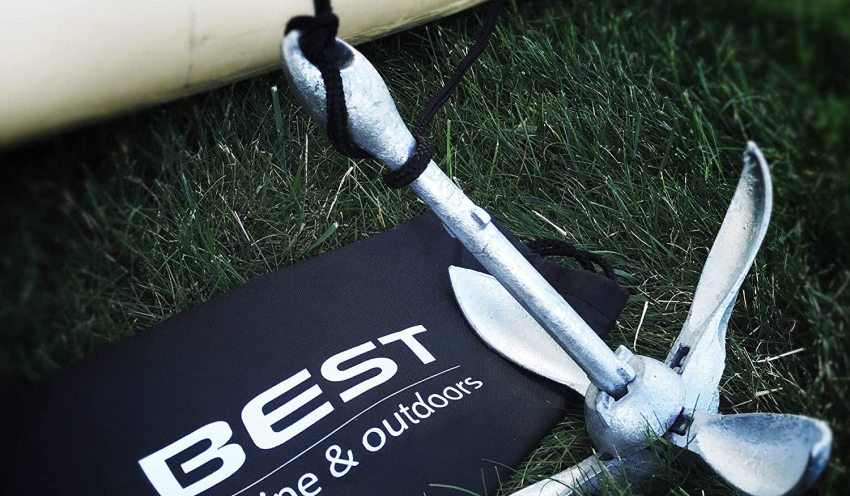
The great thing about kayak anchors is that there’s not a lot of complexity to them. They’re pretty much the same across the board: something with a bit of weight and maybe a hook or extending arms to drag on the bottom of the river/lake bed and secure you in place.
However, there are a few factors that you’ll need to evaluate when shopping for the right anchor for your kayak:
Weight
As with everything on a kayak, weight is one of the most crucial factors to consider. You’ve got to make sure you’re not overloading your kayak, otherwise you’ll A) struggle to paddle, and B) increase the risk of capsizing.
However, you do want an anchor that is heavy enough to keep you from drifting while you’re fishing. That means you will need at least A BIT of weight, even if you’re opting for the plow or grapnel-style anchors.
As I mentioned above, mushroom and drag chain anchors tend to be heavier because they need enough weight to stay firmly in place while dragging along the bottom. However, you can find lighter-weight grapnel, plow, and Bruce anchor options in the 1.5 to 3.5-pound range.
On calm days, a 1.5-pound anchor dug into the ground is enough to keep you from drifting. With faster currents or high winds, however, you’ll want an anchor that weighs 3 or 3.5 pounds just to make sure you’re securely anchored in place.
Material
Kayak anchors come in a wide variety of materials. Most classic is steel—either galvanized or stainless steel—or cast aluminum. Stakeout poles are often made of fiberglass.
Some steel or aluminum anchors have a waterproof coating that prevents rust and corrosion, as well as protects against salt build-up (if you’re fishing in saltwater).
Anchor Line
Anchor line refers to the rope, chain, or paracord used to secure the anchor to your boat. Chain is certainly the toughest, but also the heaviest. Rope and paracord made using synthetic, marine-grade materials will be much lighter, more compact, and also very resistant to deterioration.
Scope: How Long Should Your Line Be?
The term “scope” refers to the length of the anchor line relative to the depth. There is a “rule of thumb” with watercraft that says you should carry roughly 7 feet of line for every foot of depth to anchor. It’s a way to always make sure you’ve got enough rope in any situation.
However, this is more the case for larger boats that have space enough to store that much line. For a kayak, the ratio should be more in the range of 3-5 feet of line for every foot of depth. So if you’re fishing in a spot with a 10-foot depth, you need between 30 and 50 feet of line. If the depth is 20 feet, you’ll need between 60 and 100 feet, and so on.
To be safe, you should consider an anchor line of roughly 50-75 feet—that should be enough for most conditions!
Accessories
Some anchors come with handy accessories, including:
- Anchor marker buoy that floats on the water to let you (and other passing boats) know where your line is anchored
- Snap-hook to easily secure the rope or chain to the anchor
- Storage bag to keep the line out of the way when the anchor isn’t in use.
They’re not necessary, but they’re certainly a convenient addition to your kayak anchor.
How to Rig an Anchor on a Kayak
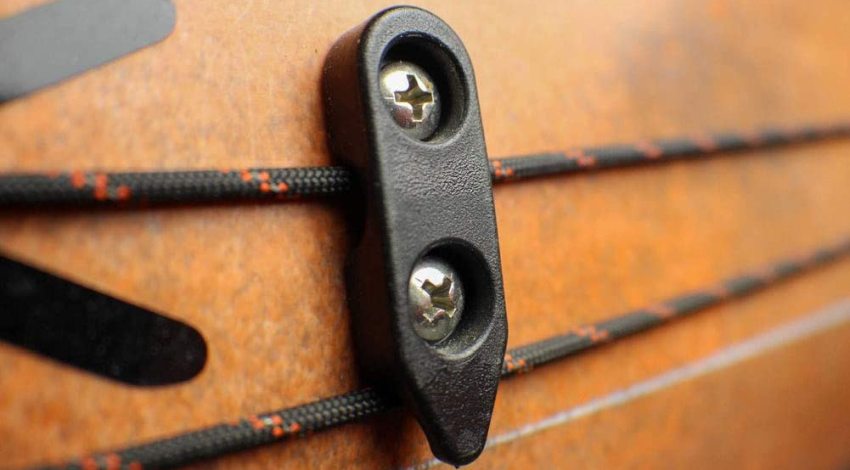
Rigging an anchor on your kayak is very easy if your kayak comes with special anchor mounts. Anchor mounts are specialized hardware mounted to your kayak, which you then run the anchor rope or line through to secure it in place.
Fair warning: most kayaks won’t include anchor mounts, so you’ll need to purchase this hardware separately. The hardware gets bolted to your kayak’s hull, both to protect the hull and provide a secure spot to mount the anchor that won’t damage the line. The Yak Attack Lever Lock Deluxe Anchor Trolley is a top-rated, highly durable mount that will give you a solid anchor point to secure the line to.
I also recommend using an anchor lock system—essentially, a lock that stops the line from running out once the anchor is securely in place. You can stick with a simple cleat, but I’ve been a huge fan of the Scotty Side Deck Mount because it has easy lock-and-release action that I feel is safer for reeling in and letting out my anchor.
And, of course, one final addition: an anchor reel or winch. It’s absolutely no fun hauling up yards and yards of cold, wet anchor rope, much less doing this a few dozen times a day! Using a reel or winch will do the heavy lifting for you and keep your hands (mostly) dry.
Keep it simple with the Scuba Max Dive Reel (used for scuba lines), or a bit fancier with my personal favorite, the Anchor Wizard.
Kayak Anchor Maintenance Tips
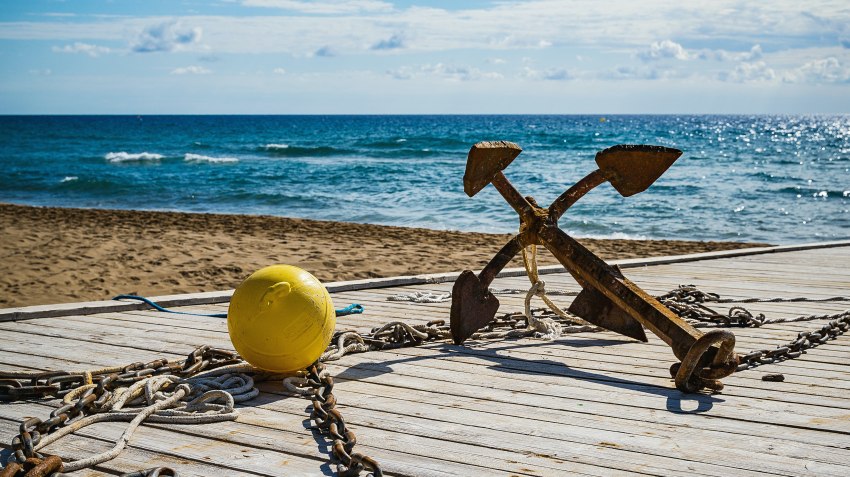
So you’ve bought an anchor and already started using it on your kayak fishing trips. It’s a game-changer, isn’t it? It makes staying where the fish are so much easier, and stops you from drifting off-course even when the wind picks up.
But take note: just as with the rest of your kayak gear, you need to take proper care of your anchor to prevent it from rusting or breaking! That means:
- Washing it with clean water after every use, especially if you’ve gone fishing in saltwater or in a pond with lots of bacteria or algae.
- Using a mild detergent for more effective cleaning. Make sure all corrosive particles are washed off by using a mild detergent.
- Letting it air-dry before storing. Never put your gear away wet, especially if storing it in a garage, basement, or shed with very little air flow.
- Storing it away from sunlight. The UV rays in sunlight will degrade the material faster, weakening both the anchor itself and your line.
- Taking care of the rope/chain, anchor mount/trolley, and other accessories. The anchor line is particularly susceptible to being damaged and deteriorating. Give it a thorough inspection to make certain it’s not fraying, unraveling, or somehow been cut or damaged while in use. And give the anchor mounts, trolleys, reels, and locking systems a thorough once-over, tightening any bolts as needed.
FAQs
Typically, an anchor is mounted to the stern (back) of a boat, or sometimes to the bow (front). Kayaks that include mounting hardware already installed will typically feature them on the bow or stern. However, you can always opt for an anchor trolley that lets you customize where on the bow, stern, or the side of your choice to set the anchor point.
If you’re all about that #paddlinglife and exploring lakes, rivers, and the open ocean, then no, you don’t need an anchor. But if you’re an angler or casual fisherman who wants to enjoy the relaxing comforts of sitting in one spot with your line in the water, a kayak anchor will help to keep you securely in place and stop you from drifting.

